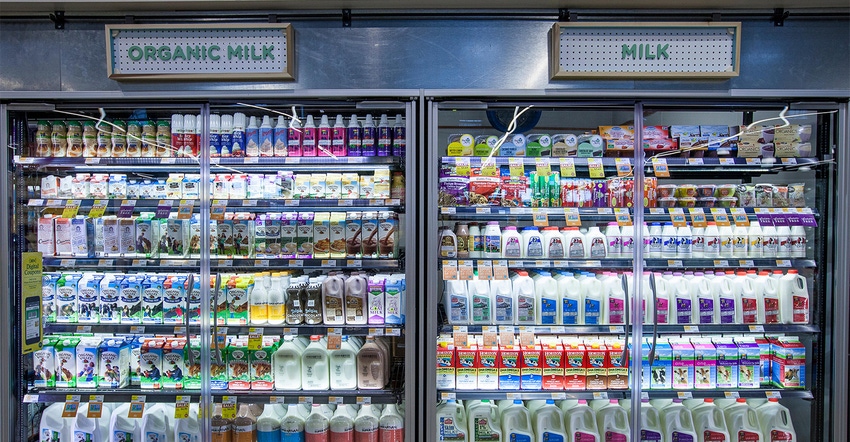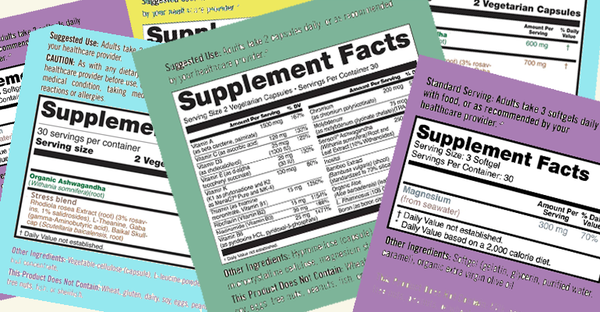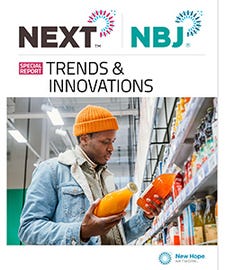Organic sales growth has slowed, but consumers are looking beyond food to personal care, supplements and more. Brands must shift strategies to reach them.
March 20, 2023

It's true that 2020 went down in the books as a year of unprecedented growth in the natural products marketplace. It's also true that the aftermath has left the ripple effects of such spontaneous growth. The organic industry is no exception.
The exuberant growth of 12.8% in 2020, as reported by the Organic Trade Association (OTA), was followed by an unremarkable rate of 2.2% in 2021. Whisperings about organic's diminishing status have rippled through the industry. But that's where the natural products industry needs to stop and listen a little more closely to what consumers are saying. Despite supply and infrastructure challenges, organic is not a diminished brand. In fact, if you listen at the consumer level it seems to be more relevant than ever and not just for its longstanding story of "no pesticides." There's more to organic than meets the eye; here's why.
Organic by the numbers
Yes, organic growth in 2021 came in at an overall rate of 2.2% according to the Organic Trade Association (OTA). When parsed out, growth rates were at 1.8% for organic food sales and 6.9% for non-food sales. Still, these numbers should come as no surprise when the marketplace over the last three years is taken into consideration.
Before the pandemic, growth was already starting to settle into single digit numbers, with a total overall growth rate of 5% in 2019. The frantic product-grabbing, shelf-emptying shopping when COVID-19 appeared jettisoned this to 12.8% in 2020, a number not expected to be sustainable. Of the last three years, Erin Harper, director of merchandising and refrigerated grocery at Whole Foods Market, aptly noted at the Organic at Retail: Trends and Insights session at Expo East last fall that "2020 was the year of inventory; 2021, infrastructure; and 2022, inflation."
Yes, during a time when logistics, supply and inventory challenges were colliding at an unprecedented rate and topped off by rising inflation, the organic industry recorded $63.3 billion in sales with organic food making up the vast majority of those dollars. In 10 years, organic food has doubled in market value from $27.9 billion to $57.5 billion in sales reaching a penetration rate of 6.3% into overall food and has typically maintained a growth rate higher than that of the overall food market.
In 2021, the $5.8 billion non-food market—fiber, dietary supplements, personal care, pet food, household goods and flowers—also continued to expand at a rate of 6.9%. These are categories that remain ripe with opportunity, as consumers are increasingly understanding that the chemicals they don't want to put in their bodies also exist in products they are putting on their bodies or feeding their pets.
Looking forward, as organic continues to penetrate mass market and settle into its mainstream status, overall single-digit growth is expected. Yet, even as inflation, supply and infrastructure challenge growth in the near future, it has not dampened consumer demand for organic. And it's worth noting, that the reasons why consumers are shopping for organic are increasing and continue to evolve. Here are a few consumer insights to consider.

Why consumers want organic
As we move out of the grip of the pandemic, consumers are embracing new ways of thinking. Top amongst these is a new way of thinking about health and wellness, which is manifesting in many ways. Consumers want to build and maintain a strong immune system all year round, not just in cold and flu season, but they also desire clean products with clean ingredients. Consumers are increasingly thinking about climate change and sustainability when they make their purchases. This rolls into the mission or a company's value system mattering more. Where consumers may not start out looking for organic, they often end up purchasing organic products because organic's story and attributes match what consumers are looking for in a product.
"Environmentally and health-conscious folks are still looking for organic, but as awareness of healthy living grows it may include people who are not as familiar or attached to the benefits and rational of organic," explains Emily Kanter of Cambridge Naturals. In this scenario, she says, "It is a selling point, but not a demand." Still as a selling point, organic tends to tell a much more interesting story than its counterparts. If a young consumer comes in looking for a "clean" or "sustainable" product, they will often land on organic for both its clean profile and mission.
Mission and sustainability matter
The idea of consumers being drawn to a product for its story, rang through in the recent NEXT + Nutrition Business Journal "Trends & Innovations" report. Here, NEXT researchers analyzed 35 trends against each other to arrive at a list of trends with the most momentum heading into 2023. The top 10 trends—healthy whole foods and holistic nutrition, eco/social values and using diet to build a resilient and solid foundation to address health conditions—are of equal value in the marketplace, says Amanda Hartt, senior manager at New Hope's NEXT Data & Insights. In this report, "organic stewardship" landed at number 5. The momentum for organic continues to be driven by consumer demand, as 31% of consumers say they are prioritizing purchasing organic products.

Similarly, NielsenIQ reports that when consumers choose organic, value, quality and price are top purchase drivers. Other key consumer considerations include interest in nutrition, how products are manufactured or grown, and company values. And while consumers' desire for products that exemplify sustainability and social responsibility has been understood for a while, a recent report published by NielsenIQ in partnership with McKinsey & Company shows that focusing on these initiatives does pay back in dollars. The report examined sales growth for products that claim to be environmentally and socially responsible. Based on previous reports outlining that consumers care about sustainability, the report aimed to further back that consumers do indeed care about environmental, social and government (ESG) initiatives and there are dollars to show it.
The data evaluated 600,000 SKUs from 44,000 brands across 32 food, beverage, personal-care and household categories over a 5-year period. The analysts also looked at data from consumer insights from NielsenIQ's household panel, which tracks the purchasing behavior of people in more than 100,000 US households. From the data, the team identified 93-different ESG-related claims and divided them into six types of claims, which included organic-farming methods:
Animal welfare.
Environmental sustainability.
Organic-farming methods.
Plant-based ingredients.
Social responsibility.
Sustainable packaging.
"Products making ESG-related claims averaged 28% cumulative growth over the past 5-year period, versus 20% for products that made no such claims," researchers determined On average, products with multiple claims grew more quickly than other products. The majority of categories showed a positive correlation between growth rate and the number of distinct types of ESG-related claims a product made. Products making multiple types of claims, such as certified grass-fed, B-Corps, Fair Trade and USDA Certified, grew about twice as fast as products that made only one.

Organic opportunities: Diversity and untapped consumers
Another trend shaping the growth of organic is an ever-diversified marketplace, which is attracting new consumers to whom the industry has not traditionally marketed. The target organic consumer has for years been talked about in terms of new parents, young families and the chief household health officer, who is typically thought of as a white female. But research demonstrates this is flawed thinking and unveils missed opportunities. As NBJ and New Hope Network's NEXT platform outlines, it's important to understand that only about 6 in 10 U.S. consumers are white. The natural channel shopper skews towards being more diverse than the general population. In fact, 47% of natural channel shoppers identify as Black, Asian, Indigenous, Hispanic or Latino.
For sure, married couples are still the most valuable shoppers for organic. According to NielsenIQ, 64% of organic volume comes from married couples and 31% of organic volume comes from married couples with kids. But what NielsenIQ data also shows is that both Asian and Hispanic shoppers index higher for organic products than previously indicated.
Of note to retailers is that nearly 30% of all households who buy organic are heavy buyers of organic—and organic buyers tend to spend significantly more across the store.
Organic messaging is shifting
Not only is the organic consumer evolving, so to is the messaging that consumers respond to when considering an organic purchase. In a messaging study conducted by New Hope's Inside Organic, six possible organic messages were evaluated for traction:
Organic is better for people and planet.
Organic means you have transparency and traceability across the supply chain.
Organic promotes animal welfare.
Organic is a powerful solution to climate change.
Organic products are made with clean ingredients, free from pesticides, chemicals and toxins.
Organic plays a key role in living a healthy lifestyle.
As might be expected, the two concepts with the greatest potential to motivate respondents to buy more organic products are "Organic products are made with clean ingredients, free from pesticides, chemicals and toxins" and "Organic is better for people and the planet." While "Organic means you have transparency and traceability across the supply chain" garnered the least interest as a leading message to consumers, it should be noted that transparency is still very important to consumers. It's a reason to buy organic, but it's not the key message that would draw them in to make a purchase.
By age, "Organic is a powerful solution to climate change," resonated with respondents ages 18-34, while respondents ages 35-46, were slightly more motivated by "Organic plays a key role in living a healthy lifestyle." As a secondary message, "Organic promotes animal welfare" garnered interest from all groups and even showed to have appeal among non-natural channel shoppers.
Still, within this study more than half of respondents said they want to learn more about organic foods. As the organic market works through its kinks and supply chain challenges, it's worth thinking about how and to whom you are marketing your organic products. With the right platform, the right messaging and the right reach to varying demographic groups, demand and interest in organic is still definitely there.
About the Author(s)
You May Also Like




